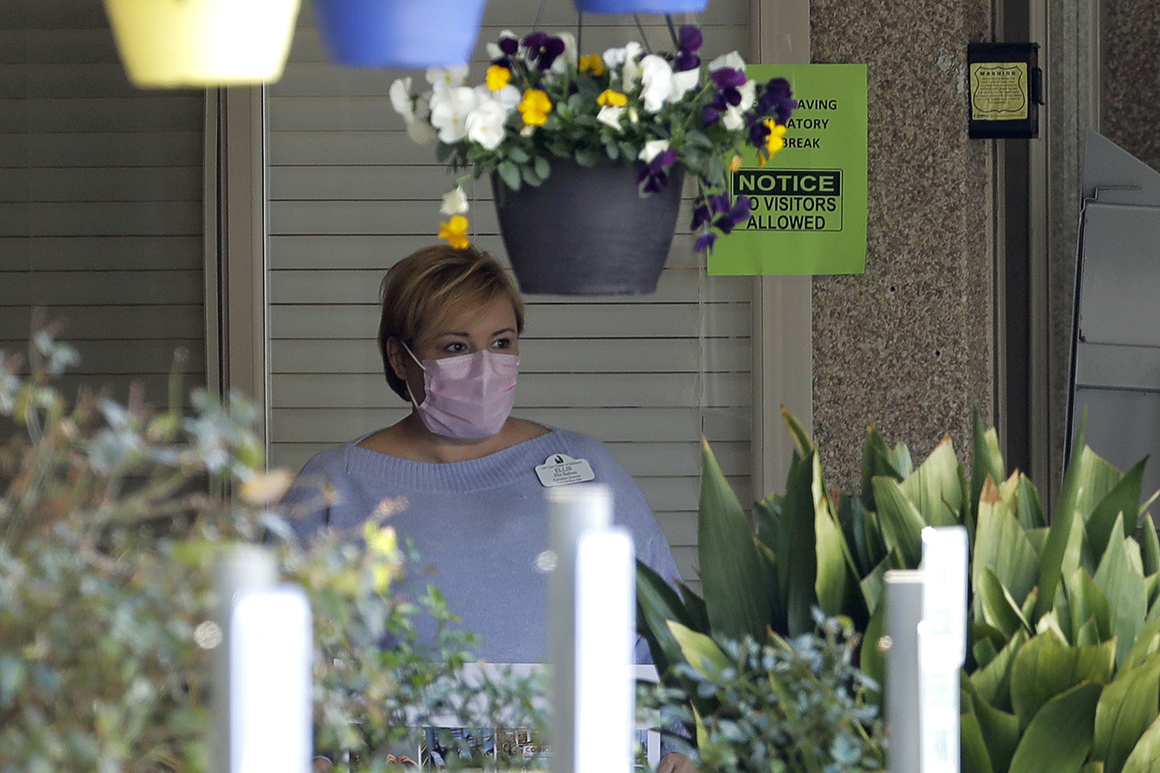
Hospices can work in nursing homes — but the lockout creates barriers to getting in. The National Hospice and Palliative Care Organization said CMS recently granted some emergency flexibility so hospice workers can use telemedicine and phone calls to help the nursing home staff care for dying patients.
But even essential personnel — nurses, therapists and others who come in and out and often work at more than one long-term care setting — can spread the disease among a population that is by definition fragile.
“We have said, and we repeat again, that our providers do not have sufficient supplies of personal protective equipment and other resources to adequately protect staff and to ensure the well-being of residents,” Katie Smith Sloan, president and CEO of LeadingAge, an association of nonprofit providers of aging services, said in a statement.
Hospitals, which do risky invasive procedures and are seeing large numbers of Covid-19 patients, are frantically trying to acquire enough gear, and they generally get priority.
By the time testing began at St. Joseph’s Senior Home in Woodbridge, N.J., two dozen residents had been infected and nurses were also calling in sick. It was particularly hard to figure out what was going on there as St. Joseph’s had both a flu outbreak and coronavirus at the same time, according to information the town provided, based on its communication with the home. To better control the infection, residents were actually transferred to a different facility. Nobody from St. Joseph’s was available to speak when POLITICO called.
It’s easy to see how the virus can spread in a nursing home. Residents eat together, and congregate together for activities. Reducing isolation, creating connection, building a more home-like setting has been the goal of elder care for years — although CMS directed nursing homes in mid-March to stop communal activities.
“Now, it’s no visitors, no communal meals,” said David Grabowski, an expert in aging and long-term care at Harvard Medical School. “It’s absolutely necessary now but by no means is it good nursing home care.”
And as state and public health officials eye where to send people who no longer need to be in the hospital but can’t go home, some have suggested using nursing homes. But given that nursing home residents are already so vulnerable to contracting severe cases, that creates a new set of problems. Some health experts have considered designating some nursing homes as for people with the virus, and some that are not. That would require quick and reliable testing. Abbott’s newly approved rapid test is not yet widely available.
Meanwhile, states and nursing homes are battling the virus, and some state officials are being transparent. Maryland, New Jersey and West Virginia, for instance, have been open about the hard truth. Despite measures to limit visitors, the infection got into nursing homes and quickly spread to, in some cases, dozens of residents.
Source: politico.com
See more here: news365.stream






